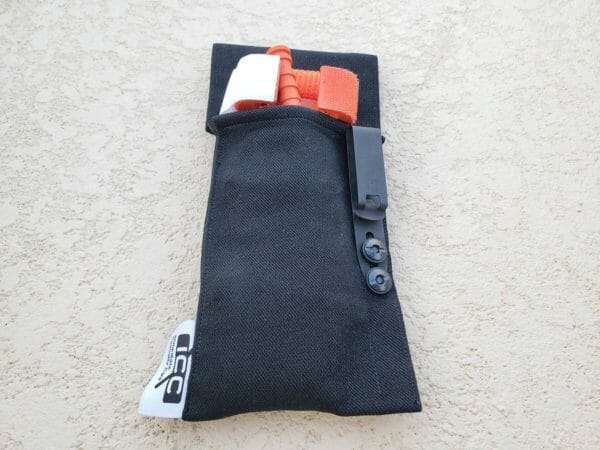
U.S.A. –-(AmmoLand.com)- Carrying medical equipment on your person is an important aspect of everyday carry (EDC). One of the best pieces you can carry is a tourniquet. While there are a variety of methods to carry this particular piece of equipment, I’ve settled on IWB carry as my preference over the past several years. After having tested a handful of other IWB tourniquet pouches, I didn’t think there was much left to learn about the type.
That all changed a few months ago when I first saw the Immediate Casualty Care IWB Tourniquet Carrier. What makes this product stand out from the others in the competition?
Design of the Immediate Casualty Care IWB Tourniquet Carrier
While the design of the Immediate Casualty Care IWB Tourniquet Carrier is pretty straightforward, there are some unique features to the product. In simple terms, this is an elastic pouch that you slide your tourniquet into, then place the pouch inside your waistband.
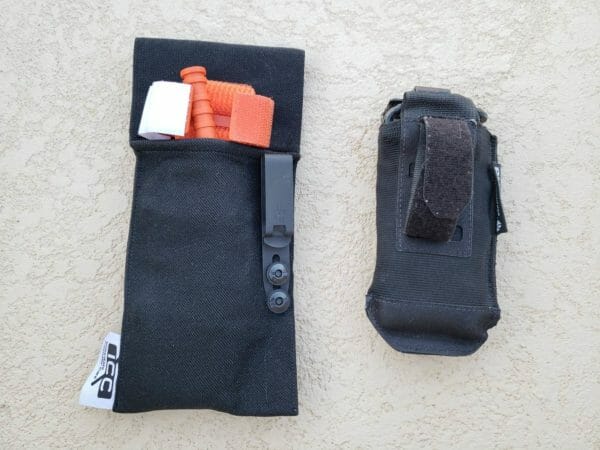
The pouch affixes to the belt via a clip, with ICC offering three different clips depending on your preferences. I opted for the Discreet Carry Concepts Mod4 clip on mine. This is a spring steel clip, the same used on many of my holsters; offering excellent retention with a low profile to improve concealment. The IWB Tourniquet Carrier is wider than competitors to accommodate the front-mounted belt clip, slightly increasing the overall footprint of the pouch. Depending on your belt clip of choice, users may have the possibility to adjust the ride height of their pouch.
Another interesting feature of the Immediate Casualty Care IWB Tourniquet Carrier is its improved compatibility with CAT tourniquets. This is done by having the rear of the pouch extend significantly past the opening, giving the wearer a buffer between their skin and the “ears” of the CAT. Additionally, the pouch is a bit deeper than competitive options, again to help accept the taller CAT. To date, this is the only IWB TQ pouch I’ve seen that has made specific accommodations for the CAT versus other more typically concealable tourniquets.
Real World Use
I wore the Immediate Casualty Care IWB TQ carrier as part of my EDC for two months for this review. It accompanied me to IDPA and Steel Challenge matches, an Appleseed clinic, and my day-to-day at work, home, and around town. During this time I wore both CAT and SOFTT-W tourniquets for a comparison of comfort and concealment with two quality options. The DCC clip is easy to don and doff as needed while offering a low-profile mounting solution for the pouch. I definitely think it’s an upgrade over typical velcro belt loops found in other similar products.
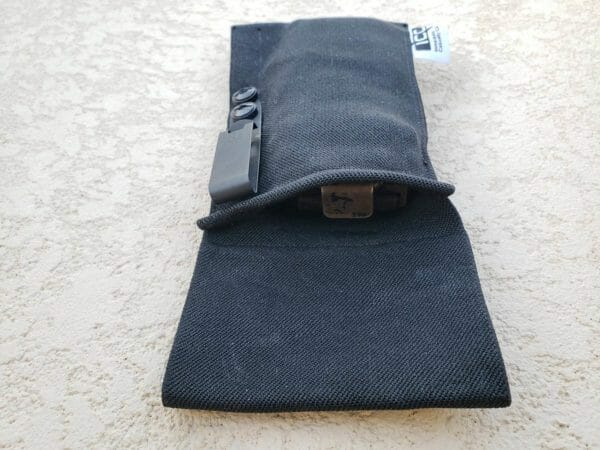
The most notable difference between this pouch and similar options is the large flap at the top of the carrier. This flap makes carrying a CAT tourniquet feasible, which hasn’t been the case with the competition. Using the ICC pouch, I was able to wear the CAT comfortably for about five hours straight, while primarily seated, during my workday. Shortly after this the CAT began to be a little uncomfortable, made worse by the windlass shifting inside the pouch. At just over seven hours the CAT became painful to wear with the windlass jabbing the crease between my leg and groin. Despite this, the pouch’s flap kept the top of the windlass and the CAT’s ears plenty comfortable, performing far better than I had anticipated.
Concealment
The Immediate Casualty Care IWB TQ carrier isn’t without a downside, however. While the large flap does enable the comfortable carry of a CAT, it isn’t particularly necessary for slightly smaller tourniquets such as the SOFTT-W. I’ve also found that the large flap often impedes concealment for me. While this is largely dependent on your wardrobe, and the level of printing you’re willing to accept, it’s a bit more than what I’m comfortable with.
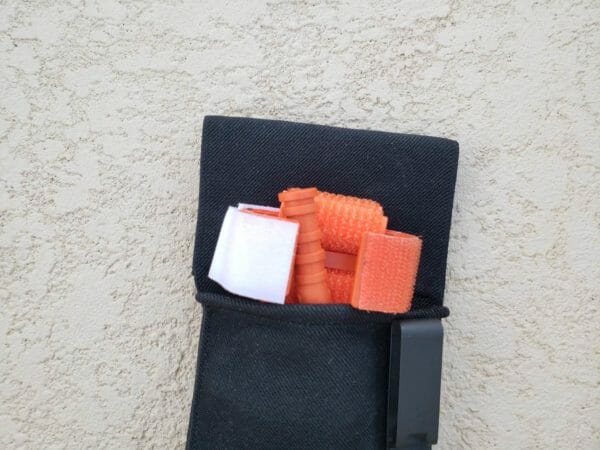
Wearing a jacket or other outerwear mitigates this printing, but that isn’t always an option. I’d like to see an additional model of the Immediate Casualty Care IWB pouch which features either a smaller or removed flap to reduce its footprint for better concealment and use with tourniquets other than the CAT. I think these two models would cover the vast majority of TQs recommended by the TCCC, without being burdensome to the manufacturer.
Final Thoughts on the Immediate Casualty Care IWB Tourniquet Carrier
Overall I really like the Immediate Casualty Care IWB tourniquet carrier. I think it offers some unique features for the low-profile carry of medical equipment, with great options for belt attachment. On top of this, it remains the only quality solution I’ve used for the comfortable carry of the ubiquitous CAT. While it isn’t without shortcomings, it remains a solid piece of EDC gear. If you’re looking for a quality method of carrying a concealed tourniquet on your person, give the Immediate Casualty Care IWB Tourniquet Carrier a serious look.
You can check out the variety of products offered by Immediate Casualty Care >>HERE<<
About Dan Reedy
Dan is an Air Force veteran, avid shooter, and dog dad. With a passion for teaching, he holds instructor certifications from Rangemaster, Agile Training & Consulting, and the NRA. He has trained with Darryl Bolke, Mike Pannone, Craig Douglas, among several other instructors, amassing over 400 hours of professional instruction thus far. In his spare time you’ll find him teaching handgun, shotgun, and less lethal classes.
Dan’s work has been published by Primer Peak, and The Kommando Blog, and he has been featured as a guest on Primary & Secondary.






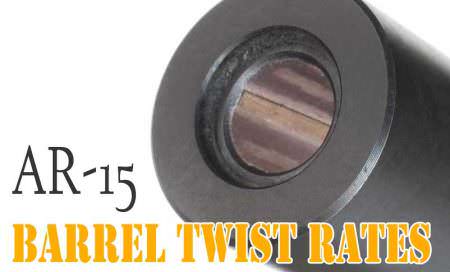
Dan – many thanks for a great suggestion. I am however curious about one thing. Why don’t more people advocate carrying chest seals as a first step? They are easier to carry and more likely to be needed than a tourniquet. Going one step step further, if I am carrying a tourniquet already, I am certainly going to also carry chest seals. Just a thought, but I’d like your opinion on this.
I think the tourniquet is still thought of as kinda sexy in the minds of those newer to medical. Especially since the science behind their effectiveness is still somewhat fresh from the GWOT. They’re definitely handy, but they’re not the be-all-end-all. I don’t know how much thought is actually put into what is carried by most people, though a TQ is a good start. Another piece of medical equipment that is often neglected is hemostatic gauze and a pressure dressing. Both of those are really helpful, with gauze being useful in places where a TQ isn’t. I wear an ankle… Read more »